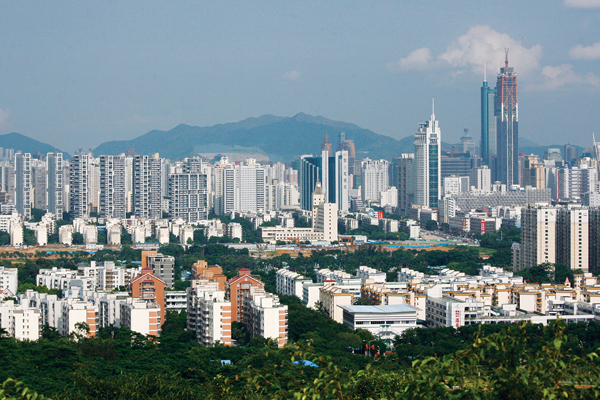
In April 2015, the State Council issued overall plans for the construction of FTZs in Guangdong, Fujian and Tianjin, as well as a plan for further reforms in the Shanghai FTZ. With the launch of these initiatives, “FTZ” has become one of the country’s most significant economic concepts, and the media has already declared a new 2.0 era for FTZ construction.
China used to be known as the world’s factory floor while Guangdong was perceived as China’s factory floor. But now, however, “the overall environment is not very good in Guangdong. If you take a tour in Dongguan, you will find a lot of empty plants. Our labor costs have shot up too high,” said Wang Jing, managing partner of Wang Jing & Co. in an interview wiht ALB.
An important hub along the 21st Century Maritime Silk Road, Guangdong has seen the business opportunities brought about by its FTZ. The 116.2-sq km Guangdong Pilot Free Trade Zone covers the Guangzhou Nansha New District, Shenzhen Qianhai-Shekou block and Zhuhai Hengqin New District. Each area has its own priorities: Nansha is the centre of production-related services, Shenzhen Qianhai-Shekou is aimed at financial liberalisation, while Zhuhai Hengqin is the hub for tourism, leisure, culture and education.
Reforms have become a pressing need in Guangdong amid pressure from economic downturns. According to Wang, Guangdong should move away from manufacturing and prioritise services instead. and the government is now thinking of ways on how to bring about this change.
“Shenzhen is a story of successful transformation. With its focus shifting from manufacturing to high-tech industries, Shenzhen has become the headquarters for quite a lot of Internet giants. Guangzhou, while also seeking transformation, cannot take the high-tech path because that would be repetitious. Guangzhou needs to focus on services, especially services like finance and insurance,” says Wang.
At the 2015 Corporate Finance Summit in Shenzhen held in October, Wang Haifeng, director of the National Development and Reform Commission’s Institute for International Economic Research, told the media that “reform and liberalisation of the service sector should be the core of pilot programmes launched by FTZs.” He believes that FTZs should leverage financial innovation to accelerate the opening up of services. At present, the four major FTZs have shown different focuses in the first round of innovation, and based on Haifeng’s assessment, Shenzhen is in the best position to lead in the second round.
Back to topPUSH FOR FINANCE AND INSURANCE
At a September symposium on how the insurance sector can serve the “One Belt, One Road” initiative, Zhou Yanli, vice chairman of the China Insurance Regulatory Commission (CIRC), encouraged insurance companies to get involved in the construction of the Guangzhou Nansha FTZ. He even promised that “everything Shanghai [FTZ] offers will be matched by Nansha,” including preferential policies.
In the first half of 2015, Guangzhou witnessed especially strong development in the finance and insurance industry, which is ahead of other sectors in terms of growth rate and percentage. It is now the second most important sector in Guangzhou and is the leader among modern service industries.
According to the latest data, the value-added of the financial industry in Guangzhou was Rmb72.941 billion in the first six months of 2015 – up by 13.8 percent from a year ago – accounting for 8.8% of the city’s GDP. Meanwhile, finance and insurance-related tax revenue stood at RMB 17.933 billion, up 20.8 percent year-on-year.
As of end-July 2015, Guangzhou’s RMB and foreign currency deposits were worth RMB 4.44 trillion while its outstanding loan amount was RMB 2.68 trillion, putting it in the fourth place among major Chinese cities. Securities transactions reached RMB 13.69 trillion while futures stood at RMB 9.99 trillion, allowing Guangzhou to outpace its Chinese peers. Premium income was RMB 42.345 billion, up by 14.24 percent from a year ago, making it the second runner-up among major Chinese cities. There were a total of 258 licensed financial institutions and more than 1,000 quasi-financial institutions in Guangzhou, with over RMB 6 trillion in total financial assets.
“Guangzhou plans to promote finance and insurance in two locations: the Nansha FTZ and the Guangzhou financial city. The financial city will offer preferential policies to attract larger financial institutions to set up business there, and then expand to the entire Pearl River Delta region. Insurance and shipping will become Nansha’s key business,” said Wang Jing. He also noted that Hong Kong’s insurance sector enjoys a better reputation in mainland China and can attract clients more easily.
At present, Nansha has already been granted more than 30 finance-related supporting policies and financial innovation pilot programmes. Over 20 insurance institutions had set up shop in Nansha by the end of July 2015.
It was also disclosed at the September “One Belt, One Road” symposium that the Guangdong FTZ will study several issues, including the mutual recognition of mainland China, Hong Kong and Macau insurance regulatory rules. The relaxation of the market-entry requirements imposed on Hong Kong and Macau insurance institutions will also be considered, which could mean that mainland China residents will be able to enjoy the services of Hong Kong and Macau insurers in Nansha. In addition, relevant CIRC policy documents show that the government supports efforts by insurance firms to establish institutions that offer elderly-care services such as homes and hospitals in the Nansha FTZ.
All the four major FTZs in China now have distinct strategic priorities. The Shanghai FTZ, which focuses on the Yangtze River economic belt, will continue to be the bellwether in promoting investment and trade facilitation, currency convertibility, efficient regulation and the development of the rule of law. The Tianjin FTZ is looking to build a high-level FTZ by leveraging the Beijing-Tianjin-Hebei integration strategy. The Fujian FTZ seeks to strengthen Taiwan-Fujian economic relations to showcase the benefits of deepening cross-strait economic cooperation. The Guangdong FTZ also has a clearer positioning: it will expand the Guangdong-Hong Kong-Macau cooperation to lead the rest of China in a new round of reforms and development.
Within Guangdong, the three major free trade blocks will compete against each other because they are all prioritising industries such as modern logistics, Internet finance and technology. Even Qianhai and Shekou, both within Shenzhen, will be rivals for the same reason. Pitting these areas against each other may not seem like a sound idea, but as lawyers told ALB, the situation is similar to the previous competition between the Shanghai FTZ and Qianhai, so this is not a bad thing.
Back to topCAPITALISING ON HONG KONG
The Guangdong FTZ now has a solid road map: it should deepen economic integration with Hong Kong and Macau and get involved in China’s “One Belt, One Road” project.
By the end of last year, there were 130,000 Hong Kong businesses in Guangdong, with investment totaling US$218 billion. Leung Chun-ying, Hong Kong’s chief executive, told the media when the Guangdong FTZ was first established that he wasn’t worried that it would lead to a “hollowing out” of the Hong Kong economy. He stressed that development opportunities would still abound for mainland China and Hong Kong. Hong Kong’s current economic development, however, is constrained by talent and land shortages, and Leung hoped that Hong Kong’s outbound economic development could be boosted by the FTZ.
The overall plan for the Guangdong FTZ also outlines other ways that it can capitalise on its ties to Hong Kong and Macau. Bilateral RMB financing between the FTZ and Hong Kong and Macau will be promoted, and financial institutions and enterprises in the FTZ will be allowed to borrow RMB funds from Hong Kong, Macau or foreign countries. Overseas parent companies of businesses within the FTZ will also get support in issuing yuan-denominated bonds on domestic capital markets, and studies will be conducted on the possibility of letting businesses in the FTZ issue RMB stocks on the Hong Kong stock market.
At the 18th meeting of the Guangdong-Hong Kong Cooperation Joint Conference that concluded in September, Guangdong Governor Zhu Xiaodan told the media publicly that the province plans to attract more Hong Kong financial institutions to its FTZ to amplify its functions by leveraging its Hong Kong connection.
As the FTZ shows increasingly obvious financial advantages, law firms are getting in the game. In May 2015, Shanghai-based AllBright Law Offices and Hong Kong-based Stevenson, Wong & Co. announced the establishment of a jointly-operated law firm in Qianhai, allowing the two firms to provide cross-border legal services in the Qianhai Shenzhen-Hong Kong modern services industry cooperation zone. The newly established joint venture is expected to bank on the latest trends and preferential policies in the Qianhai FTZ, and will focus on finance-related services such as cross-border financing, financial leasing and offshore bond issuance.
As AllBright partner Xu Biao told ALB, “Shenzhen should leverage its strengths and capitalise on Hong Kong because cultural and local exchanges between Shenzhen and Hong Kong are very convenient. If Shanghai is characterised by internationalisation, Shenzhen’s selling point should be ‘Shenzhen-Hong Kong synergies’. After all, Hong Kong will remain a global financial hub at least in the short-term and will not be replaced by any mainland city.”
Back to top


